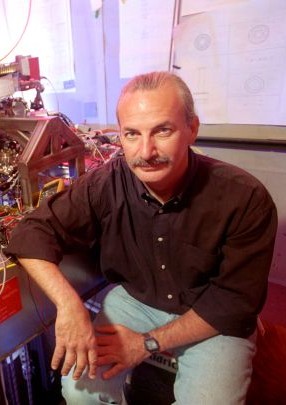- unknown (b.)
Bio/Description
An American physicist associated with the IBM Almaden Research Center, who is noted for his achievements in nanotechnology. In September 1989, he was the first to use a scanning tunneling microscope tip to arrange individual atoms on a surface, famously spelling out the letters "IBM" with 35 xenon atoms. He later went on to create the first quantum corrals, which are well-defined quantum wave patterns of small numbers of atoms, and nanoscale logic circuits using individual atoms of carbon monoxide. He shared the 2010 Kavli Prize in Nanoscience for these breakthroughs. His 1989 research, along with Erhard K. Schweizer, involved a new use of the scanning tunneling microscope, which had been invented in the mid-1980s by Gerd Binnig and Heinrich Rohrer, also of IBM. The microscope had previously been used for atomic-resolution imaging, but this was the first time it had been used as an active technique, to precisely position individual atoms on a surface. The technique requires vacuum conditions and ultra-cold temperatures achieved by liquid helium cooling, and was featured on the cover of the journal Nature. At the time, it was seen as a potential first step towards applications in mechanosynthesis, where chemical reactions could be manipulated one molecule at a time. His 2002 research, along with Andreas J. Heinrich, used a cascade of collisions of carbon monoxide molecules to perform logic operations. He graduated from the University of California, San Diego with a Bachelor?s degree in 1975 and a Doctoral degree in 1984, and was named its Outstanding Alumnus of the year in 1999. He has been recognized for his accomplishments numerous times from scientific societies such as the Davisson-Germer Prize awarded by the American Physical Society. He was named an IBM Fellow in 1993, the highest technical honor in the IBM Corporation. He was postdoctoral staff at AT&T Bell Labs for two years, and then moved to IBM where he was appointed IBM Fellow in 1993. He retired from IBM in 2011.
-
Gender:
Male -
Noted For:
Researcher who was the first to use a scanning tunneling microscope tip to arrange individual atoms on a surface -
Category of Achievement:
-
More Info:


